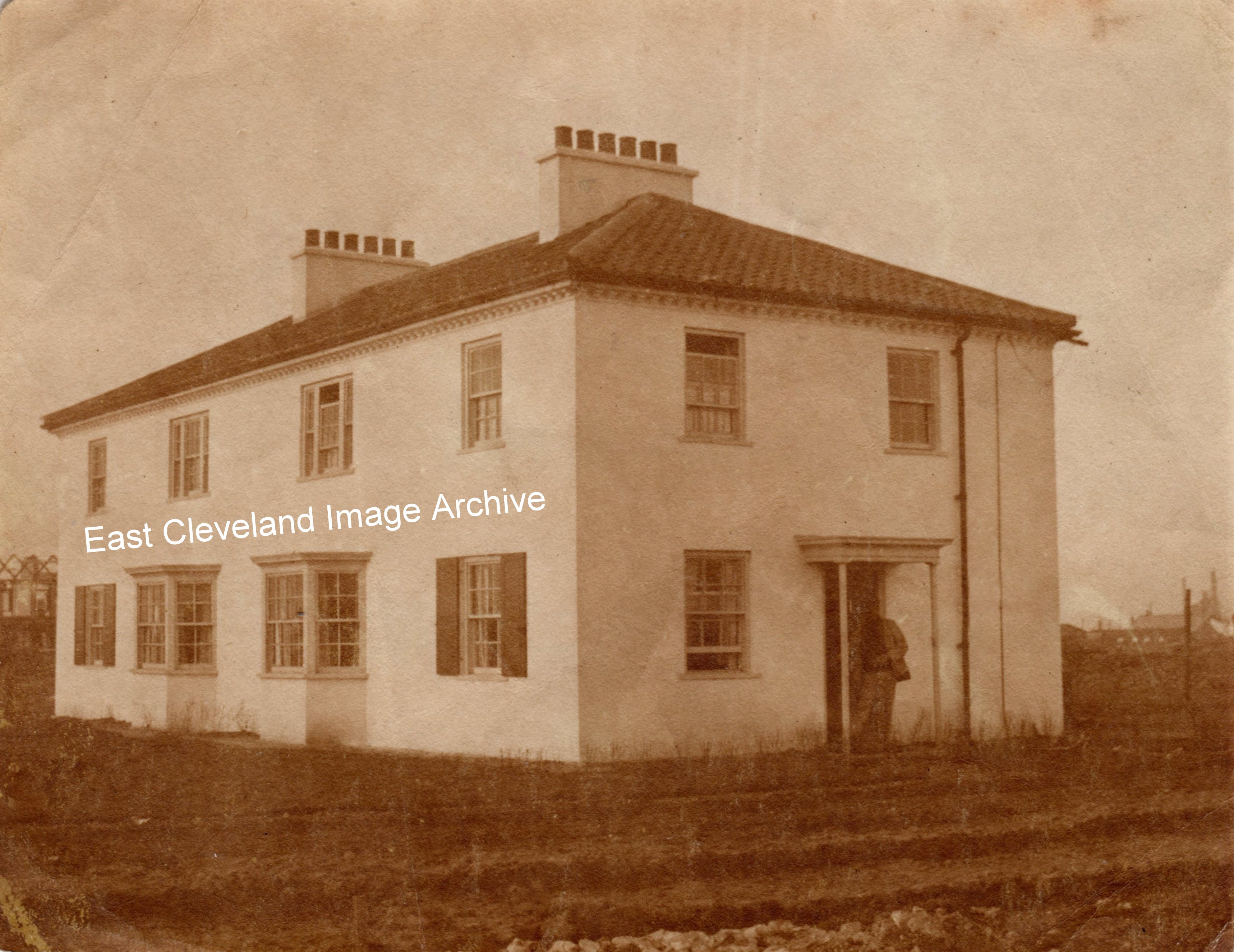
This image has the comment on the reverse: “First complete steel and Hy Rib house” at Dormanstown; known as ‘Dorlonco’,the design was named after Dorman Long the steel company at Warrenby to house the workers for the steel works, they were designed by Architects: Stanley Davenport Adshead, Ramsey and Albert Abercrombie. The builders were Jones and Sons of Westminster and Costain Brothers of Liverpool; Arch Aubrey uncle of Geoff Kitching’s father worked on these houses when they were first being built and evidently took this image. Owing to a shortage of bricks the houses were built with steel frames and clad with concrete, but were modestly elegant affairs in the Georgian style. The first 300 houses were built in two styles: kitchen houses for manual workers and parlour houses for clerical staff; Gas was supplied free to every house. When completed in 1920, Dormanstown housed 342 families. The last of the ‘Dorlonco’ houses were demolished in 1979; the streets of Dormanstown still carry names linked to the builders, Architects and even the steel works manager (Ennis Road; which was the original line for the light railway that was built to carry materials on the 850 acre site).
Image courtesy of Geoff Kitching.
There is a steel house that can be seen at the Black Country Museum. Fascinating building.Mart
Located this reference while seeking information on the Longacre Mine in Skelton.
My parents, my brother and I lived in Dormanstown at 37 South Avenue. The house was detached, formally the rent collectors. The village won an award for the broad green layout, with significant playing areas. My Father worked for Dorman & Long, which offered all sitting tenants the right to purchase the properties.
At which point the Council stepped in and bought them all? Promptly selling them to said same tenants at approximately (4) times what they paid for them.
We left the village in 1976 and moved to Guisborough. This was due in the main to the Council and a perceived blight placed on the construction of the properties? This fact was put in play after the noble Council had previously tried unsuccessfully to acquire a section of the tenants significant rear gardens. With a view to building flats in the middle of the area, building a small access road by removing two properties. A group was formed and fought to stop this successfully, however the blight issue proved to much and the properties were then compulsory purchased by the shameful Council.
In retrospect my parents enjoyed Guisborough and it proved to be a major change in their lives. But one wonders the way it was done and the changes to the community, neighbours, friends, former colleagues was actually worth the way the Council treated a huge number of people for their own ends.